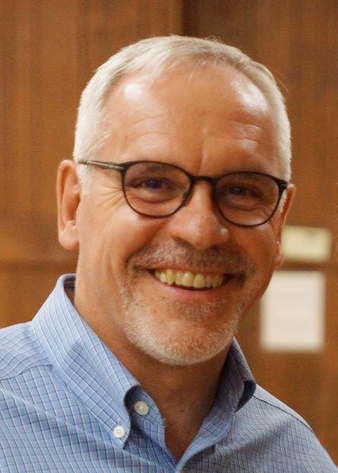On the heels of his 62nd birthday last month, Fairway Independent Mortgage Corp.’s National Reverse Mortgage Director Harlan Accola closed on his very own Home Equity Conversion Mortgage (HECM) loan. Accola previously described for RMD the long road between the point of greater reverse mortgage product awareness, and the closing of his own HECM 18 years later.
Now, Accola shares some of the other perspectives he has gleaned during his journey from reverse mortgage industry player to customer, including what the establishment of a HECM will mean for him and his family, and any potential lessons he has learned as a customer which could potentially be applied to the business going forward.
Feeling financial, emotional security from a reverse mortgage
Last time, Accola described how a conversation with his wife after the loan’s closing helped emphasize to him that an additional layer of security has been given to his family through the reverse mortgage loan.
“I said, ‘well, honey, we’ve finally got our reverse mortgage. And she said, ‘yes, and I can live in that house until I’m 150 as long as I pay the taxes and insurance and keep it maintained,’” Accola previously said of their conversation. “And, you know, that was cool. She was kind of joking, but I realized, ‘hey, my wife’s got a house whether I’m alive or dead.’”

When asked to expand on his feelings stemming from this line of thinking, Accola said that the sense of relief that he felt after his wife worded the loan that way conjured up a lot of emotions for him.
“It almost brought tears to my eyes,” he said. “Any husband wants to make sure his wife’s taken care of. And it was just kind of a pointed moment that [helped to show me that] this is kind of cool. This is exactly what a reverse mortgage is designed for.”
Beyond that, Accola realized after crunching the numbers for his family’s own situation that the elimination of his mortgage payment will make a noticeable difference to the flexibility he will have in spending more time with his family, he says.
“[My kids and grandkids] came and gave me a surprise party shortly after the closing of my reverse mortgage, and what I was thinking about was how I’m going to be able to have more fun with these grandkids and be able to afford more trips and cool experiences with them because my $2,700 mortgage payment just went to zero,” he says. “I mean, that’s life-changing. I don’t care who you are, when you don’t have to pay $2,700 a month out — I’m not Elon Musk, that wouldn’t matter to him — but that’s a big factor.”
Armed with information pertinent to his profession in the reverse mortgage business, Accola describes a scenario in which millions of Americans who have grandchildren but also make existing forward mortgage payments
“Why are they doing it? How come they didn’t get the memo?,” he asks rhetorically. “They can be just as happy as I was in that scenario, and my kids and grandkids are going to be better off because I can do more things for them while I’m alive instead of paying off a house and giving it to them when I’m 90, and they’re 60 or 70.”
Lessons from the reverse mortgage customer experience
While Accola describes his origination as smooth as well as having the added benefit of being advised by Fairway’s National Reverse Mortgage Sales Training Director Dan Hultquist and Reverse Mortgage Division Manager Kari Van Kleef, one thing that is unlikely to change about the customer experience is that gathering the necessary documents and disclosures can be very uncomfortable, albeit necessary.
“Getting all the documentation together was irritating, it was stuff that I felt, ‘why do they have to bring that up? That doesn’t have anything to do with it!’,” he says. “I pushed back on some of it but was basically told that I needed to just shut up and get it all together. I understand what people are going through. In fact, I talked to somebody that was complaining about all of the documentation that was a client of ours during the process, and I said, ‘I know how you feel! I’ve got to do the same thing.’ I’m not anyone special, I have to do exactly the same thing that you’re doing.”
While hanging those processes and necessary disclosures is not an option, Accola says that at the very least he now understands the frustrations of customers who are similarly put off by this part of the process.
“I’ve got to dig up all of this stuff, make copies of it and send it off, and it’s irritating,” he says. “And then I’ve got to explain why I got large deposits on a reimbursement. It’s irritating. But it certainly gave me more compassion for those people that complain about the documentation, because there is a lot.”
Timing is key
When asked if he experienced any “hiccups” or deficiencies in the HECM origination process as a customer, Accola says that he did not. He did say, however, that his experience of discomfort in the document-gathering stage reminded him of the advice he has given to many Fairway customers, only this time he needed to follow it himself.

However, another lesson for the Fairway reverse mortgage salesforce centers on timing, according to Dan Hultquist who helped advise Accola during the origination process.
“When I insisted that Harlan take his application when he did, we knew rates were going up,” he says. “It wasn’t a secret. I told Harlan, ‘you need to take your application before Monday night.’ He did, and he reaped the benefit from it. So I think that’s one of the lessons we’ve learned: don’t wait. Even if rates go down, there’s just too much volatility, we can never guarantee that property values will continue to go up. We will never know whether we can truly qualify for a reverse mortgage if we wait.”
Sales teams should never rely on creating an undue sense of urgency for borrowers, Hultquist says, but making clear how waiting when unnecessary can impact the structure of a borrower’s loan, he says.
“Harlan did it eight hours after his birthday,” Hultquist says. “So if you think about it, Harlan turned 62, and at 8 a.m. the next morning, he had signed his papers.”



